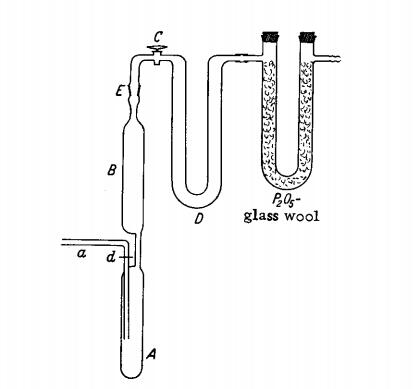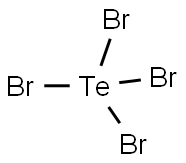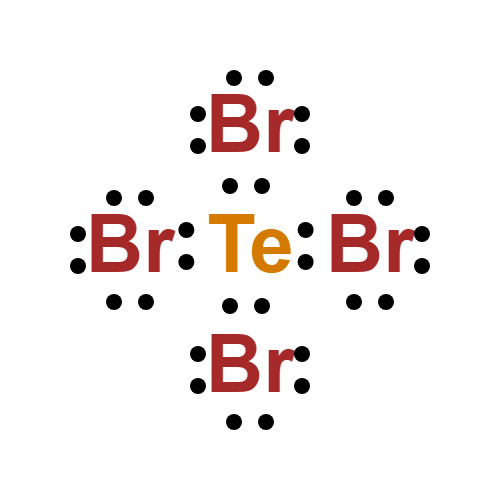Description
Tellurium tetrabromide is a iron-gray crystalline substance; stable even in moist air. Decomposes on heating, giving off I2. Hydrolyzed slowly in cold water, rapidly in warm water, forming TeO2 and HI.
Preparation
Pure Te (5 g.) is introduced through adapter a into the elongated reaction flask A of the apparatus shown in Fig.1. Adapter a is connected to a N2 purification train which furnishes either pure dry N2 or N2 containing bromine vapor. For the latter, the gas stream may be passed through a wash bottle containing dry Br2 , followed by a U tube containing P2O5-glass wool. First, the apparatus in purged with pure N2. Then A is cooled with ice water and the N2 -Br2 mixture is introduced. A portion of the Br2 condenses on the Te and reacts quietly with it, while the remainder is retained in the empty U tube D, cooled with an ice-salt mixture. The difference between the weight loss of the Br2 wash bottle and the weight of the condensate in D indicates the amount of bromine remaining in A. When this becomes about twice the amount needed for quantitative conversion to TeBr4, the gas stream is interrupted, stopcock C is closed, and the product slurry is allowed to stand at room temperature for several hours (better overnight) in order to complete the reaction. Then C is reopened and the excess bromine is purged by a stream of N2 while A is simultaneously heated to 50℃. To purify the product, it is sublimed in vacuum. Gas inlet tube a is sealed off at d, the whole apparatus is tilted to a horizontal position, and ground glass joint E is connected to an aspirator through a P2O5 drying tube. During evacuation, A is heated to sublimation temperature (about 350℃) with an electric furnace. Any black condensate which may separate in B at 200℃ is vaporized by heating with a burner. The subsequently deposited yellow to orange-red powder is quite pure TeBr4; if necessary, this can be further purified by an analogous sublimation in high vacuum.





